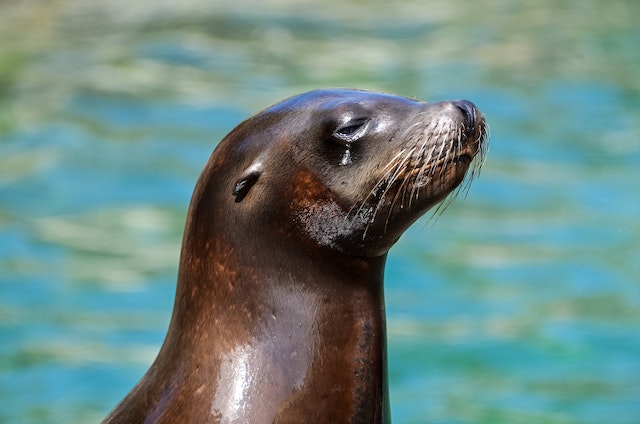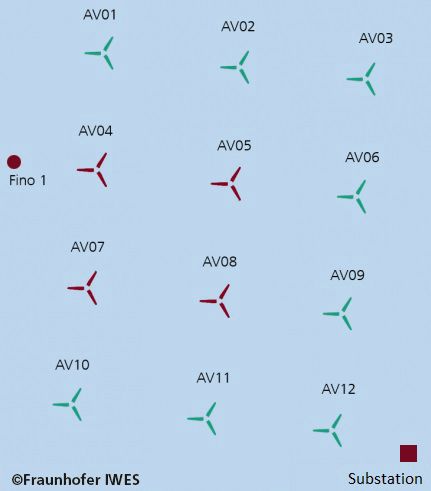Do wind farms at sea hide or reveal the ugly truth?
During research of Active Kinetic 1 wind technology the unearthing of data regarding bird culling is concerning.
The images below show the tracked path of seals that regularly visit the wind turbines.


“seals repeatedly visited the wind farms, Sheringham Shoal in UK.”



Alpha Ventus Wind Farm, North Sea
Wind Turbine Layout and location:
The data shows high frequency indicating the seals behaviour seems fairly systematic.
Scientists theorise a food source as the most common conclusion for the seals activity, however, listed below are other possibilities considered.
- seals find the sound of the wind turbines soothing.
- fish find the sound of the wind turbines soothing, seals feed on visiting fish.
- the wind turbines foundation structures reduce water currents offering calmer waters.
- In Bezt law the wind speed is reduced by each wind turbine past hence less waves occur.
Food Source
Corals are rapidly forming on the submerged structures of most sea wind farms. Recent studies confirm that fish faeces help coral life grow.
If we support this theory, the fish must feed on a nearby source of food. The fish most likely eat small pieces of food, which could be flying insects struck by the wind turbines or small pieces of body meat as a result of bird culling.
Other studies do suggest that the vertical substrate of the wind turbine foundations provide complex habitable fish hiding zones where sediment naturally forms deposits from passing sea water, however this would be a very slow process.
Seal feeding on Birds and Fish
Seals attracted by fish activity and might find larger piece of the bird body meat, however most studies only mention fish and coral as a suggested source of food. The evidence for bird culling is perceptible. If it has been assumed that a food source is the reason seals return to the wind turbines, there must be a replenished supply for these larger mammals to flourish.
Why birds might fly into turbines?
A statistic that is as certain as Betz Law; by increasing the amount of wind turbines will impact the vector of culling data. There is no proof why birds hit wind turbines, a basic analogy using
Betz Law might explain the science of why birds do fly into wind turbines.
As displayed above, in Betz law the wind slows down in front of a fast spinning wind turbine blade.
The wind speed in the high wind pressure areas moves faster and a birds instincts should tell itself to avoid the fast wind and move toward less wind pressure.
Birds prefer a slow wind path to avoid the wind and conserve energy, unfortunately this action would lead them directly into the path of the wind turbines.
Also the wind turbine blade spin fast which a bird might see as a transparent soft wall.
As birds survive by hunting for food, when Hawks, falcons and eagles are flying, they’re usually looking down at the ground for prey, hence fast spinning blades are not a visible distraction gliding past at often over 179mph.
Further Evidence.
Although only a few land studies have been published the evidence clearly confirms culling occurs. There are no certain figures on the rate, frequency or types of birds that die globally.
This recent wind turbine land study explains. “it can be projected that approximately 681,000 birds are currently killed by wind turbines in the U.S. each year.”
According to Wikipedia there are 824,874 wind turbines worldwide, based on the USA statistic of avian deaths ÷ wind turbines in USA x Wind turbines worldwide = 4’256’350.
Recently an $8 million fine was given to a wind farm for avian culling of protected eagles. This would prove that other instances of bird culling are unparalleled with wind farm culling because the inimitable species of birds killed are often endangered of extinction.
In recent years wind turbine companies have acknowledged bird collisions. Any high speeds collisions can cause severe damage to wind turbine sails. Additionally collisions cause vibrations that can lead to damage on gears, bearing components or deteriorate the structure of a wind turbine hence the entire investment is jeopardised.
As the blades are a very expensive component for protection some blade are painted to improve visibility and to protect from bird strike.
Unfortunately Active Kinetic 1 research further revealed the painted wing might cause an undesired effect, as it appears to replicate the wagon wheel effect, hence an approaching bird might see the fast spinning blades appear to be rotating slowly.
In conclusion
There is no evidence for sea wind farm bird culling studies.
It is not clear why birds fly toward wind turbines, but for sustainability statistics, considerations for extensive feasibility studies ahead of global wind turbine expansion seems ethical.
- Wind vortex speed ahead of a fast spinning turbine. Could this encourage the birds flight path as its less windy in the path of the blades? Is the slow air easier for birds to fly within.
- Is the rate of seals around turbines proof of a well replenished source of food and why.
Web references:
Video:
True cost of wind turbines.
Estimating Birds deaths.



Leave a Reply